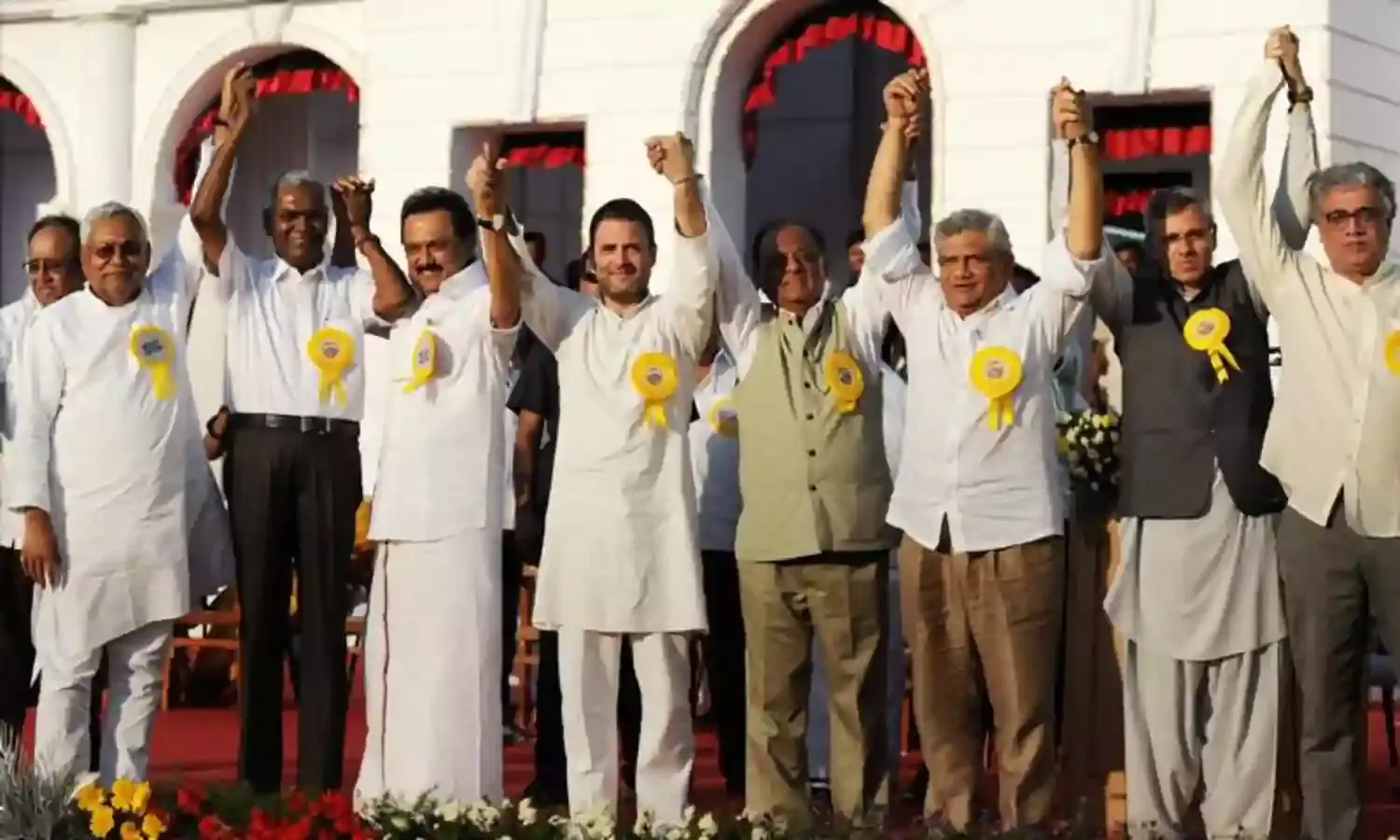Can The Congress Manage A Gujarat-Style Coalition In Tamil Nadu?
Future of the Congress in Tamil Nadu is marked by coalition with either of the Dravidian parties.
On April 7, 2018, one of the prominent English newspapers had a small news-bite, which intrigued me. The bite was regarding a petition by 15 ex-MLAs of Tamil Nadu requesting the leadership to appoint a person belonging to the Scheduled Castes as the Tamil Nadu Congress Committee's (TNCC) president. There were two surprising elements here. One was the fact that these 15 MLAs did not belong to the SC community and the other was the fact that in spite of holding the tag of a pro-SC party at a national level, the TNCC did not have a person belonging to the aforesaid sections since 1979.
The obvious question is, why is there a voice on these lines? While the number of MLAs is not big at the face of it, the fact that they do not belong to the community they are standing by makes the number significant. The answer does seem to be along the lines of winning more seats. On that note, the subsequent question is how so?
Before discussing the aforesaid questions, it would help to understand a distinguishing feature of Tamil Nadu's electoral landscape. One can safely claim that unlike the case in other States, a single caste could not and as things stand, cannot ensure electoral success. While the element of caste plays a role, the larger political identity is wider than it.
To put things in perspective, the community is diverse in itself and hence passing a generalized comment about garnering their support entirely is not a viable claim. The dominant sub-divisions on the lines of politicisation within the SCs in Tamil Nadu are Parayars, Pallars (who are now referred to as Devendra Kula Vellalars) and Arundhadiyars.
In the post-independent era the Dalits as a group, barring a few supported the Congress and then the Dravida Munnetra Kazhagam (DMK). In a few years, the Parayars began to consolidate politically within the cadres of both the Congress and DMK. For instance, the last TNCC president, Elayaperumal belonged to the Parayar community. Former Chief Minister, MG Ramachandran's (MGR) departure from the DMK to form Anna Dravida Munnetra Kazhagam (ADMK) gave the Arundhadiyars another avenue to grow politically. The Pallars stayed with the DMK, probably owing to the domination of Thevars in the ADMK and the long history of hostility between them. Over the years, while the DMK and ADMK could secure their SC cadres to an extent, the Congress could not do so for it began to lose out electorally as well.
The decade of the 90s saw the resurgence of Dalit mobilization in Tamil Nadu and new political parties were formed. The reason as opined by experts among others was the shrinking of space within the cadres of the Dravidian parties owing to both increased assertion of middle caste groups and the shift towards party coalitions (intra-state and with respect to centre).
The changed scenario saw a large section of Parayars consolidating under the Vidudhalai Chiruthaigal Katchi (VCK) and the Pallars and Arundadhiyars consolidated under the Puthiya Tamizhagam Party (PT). In a short span, the Arundhadiyars moved out to consolidate under Aathi Thamizhar Peravai (ATP). The aforesaid parties had the freedom to campaign for their aspirations and when needed, ally with the Dravidian parties to push them politically.
A precursory look at the electoral performances reveals that the Parayar consolidation is relatively less fluid than that other two. The testament to this is the electoral performance of VCK in elections and the popularity of their leader Thirumavalavan.
The fact that the leaders of Hindu Makkal Katchi (HMK) - a right-wing Hindu nationalist party - are trying to garner the support of Arundadhiyars reiterates the fluidity in Arundhadiyars' consolidation. Lastly, the stance taken by the head of PT Party at the time of the death of Anitha, over the NEET issue and the subsequent hostility among the Pallars exposed the weaknesses within the Pallar consolidation. In other words, playing a role in the consolidation of the Pallars or/and Arundadhiyars would benefit a party both socially and electorally.
The future of the Congress party in Tamil Nadu is strongly marked by coalition with either of the Dravidian parties as against contesting alone. Of the two, DMK is a natural choice. Owing to a Parayar cadre within the DMK, the unconditional support of VCK and some support from the Arundhadiyars of the Nilgiri region; the Congress could strengthen the alliance by garnering the support of either of the two communities (Arundhadiyars seeming to be a more viable option).
Furthermore, the death of former Chief Minister J. Jayalalithaa unsettled the Thevars' consolidation, to which the Congress party seemed to have responded when it elevated Thirunavukkarasar from the community to the position of State President of TNCC, when the party had already elected K.R. Ramasamy as the Chief of Congress Legislative Party (CLP) in 2016. At this juncture, it would be interesting to see how the Congress Party would react to the other avenue that is open to being tapped. A balance should be struck between consolidation of the SCs without unsettling the support already secured and the support to be secured from the Thevars. Notably, the Congress managed to do that in Gujarat with Hardik Patel and Jignesh Mevani.
(Vignesh is a Policy Analyst with a special interest in politics and identities in democratic societies. He holds a Masters in Contemporary India Studies from King’s College, London)





